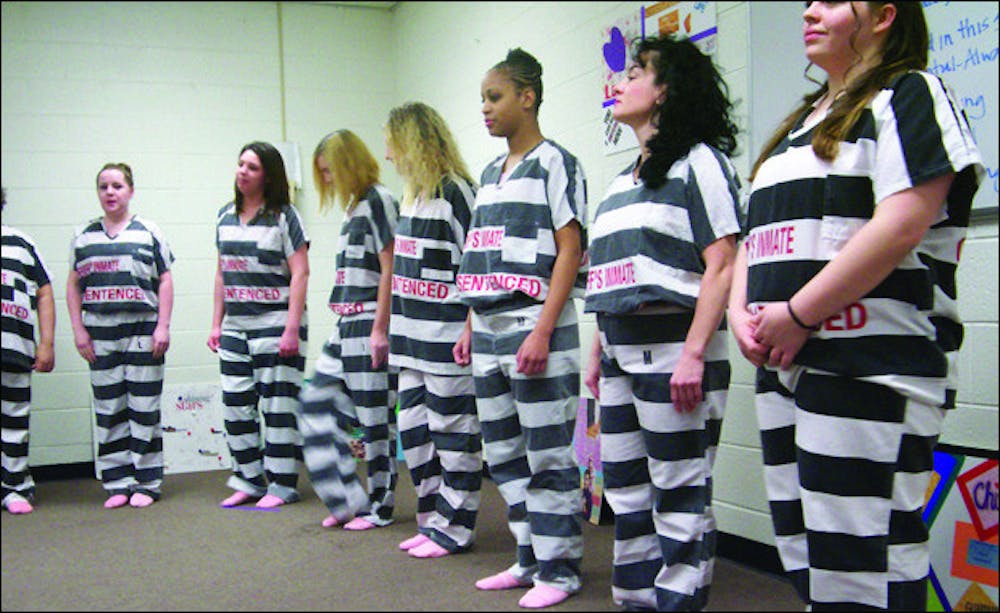Read about Michelle, "Pretty" and Alix.
Background check.
The audience was cleared for entry by law enforcement.
But first, possessions were secured in the lobby lockers of Maricopa County’s Estrella Jail in Phoenix — everything except keys and driver’s licenses. A small holding room with two automatic sliding doors separates the nonsecured outside world from the cells and dorms under lockdown within. The door to the outside and the door to the inside are never open at the same time.
About 20 sets of footsteps echoed off linoleum floors and bare walls as the audience walked through the hallways and into the Phoenix women’s jail. They entered a small room, sat in small plastic chairs and found themselves surrounded by visual art projects and a small whiteboard, on which was written: “Journey Home Commitment. … We are sisters in this space.”
On Saturday evening, 11 female inmates presented dance routines, spoken-word poetry, visual art projects and performance pieces to the small crowd inside jail walls as part of the Journey Home arts residency program at Estrella Jail. ASU Gammage sponsors Journey Home, which was established eight years ago to help incarcerated women to develop a positive sense of self through creative expression.
The inmates in this year’s program met for arts classes and workshops in about 4-hour sessions each Saturday for the past five weeks, Journey Home executive director Fatimah Halim told the audience before the performance. Halim said this year’s theme, “Blueprint for Women: Reinventing Ourselves at Every Age,” was an effort to engage the inmates in the process of self-exploration and creativity to discover their individual voices.
By creating their own performances and visual pieces, she said, the women hopefully learned to view self-expression as a positive outlet and productive alternative to destructive behavior.
“They are the writers, they are the producers, they are the dancers, [and] they are the actors,” Halim told the audience.
Colleen Jennings-Roggensack, executive director for ASU Gammage, said the Journey Home program is part of ASU’s commitment to “connecting communities,” both in terms of inmates building themselves a community within Estrella and being able to reconnect to society once they’re released.
The public’s negative perception of former inmates makes it hard for those re-entering society to be viewed as contributing individuals, she said.
But Jennings-Roggensack said the women who “find their voice” through art in Journey Home will be better able to show that they can be positive members of society.
“If they were not wearing those striped uniforms, and they performed for us in another setting, you would view them as regular citizens,” she said.
One of Saturday’s performers, who went by the name Michelle for privacy reasons, said what she most hoped Journey Home accomplished was to show the audience a more human side of those behind bars from society’s preconceived notions.
“I hope [our performance] allowed them to see that we have real lives, just like they do,” Michelle said. “I want them to take away that we’re human beings, just like everyone else.”
As they left the performance, audience members wiped tears from their eyes and said the inmates were performers more than criminals, and were teachers more than anything.
First, the inner door opened, then the outer door, and the audience walked through the holding cell of Estrella Jail the opposite way they came in.
Reach the reporter at trabens@asu.edu.




